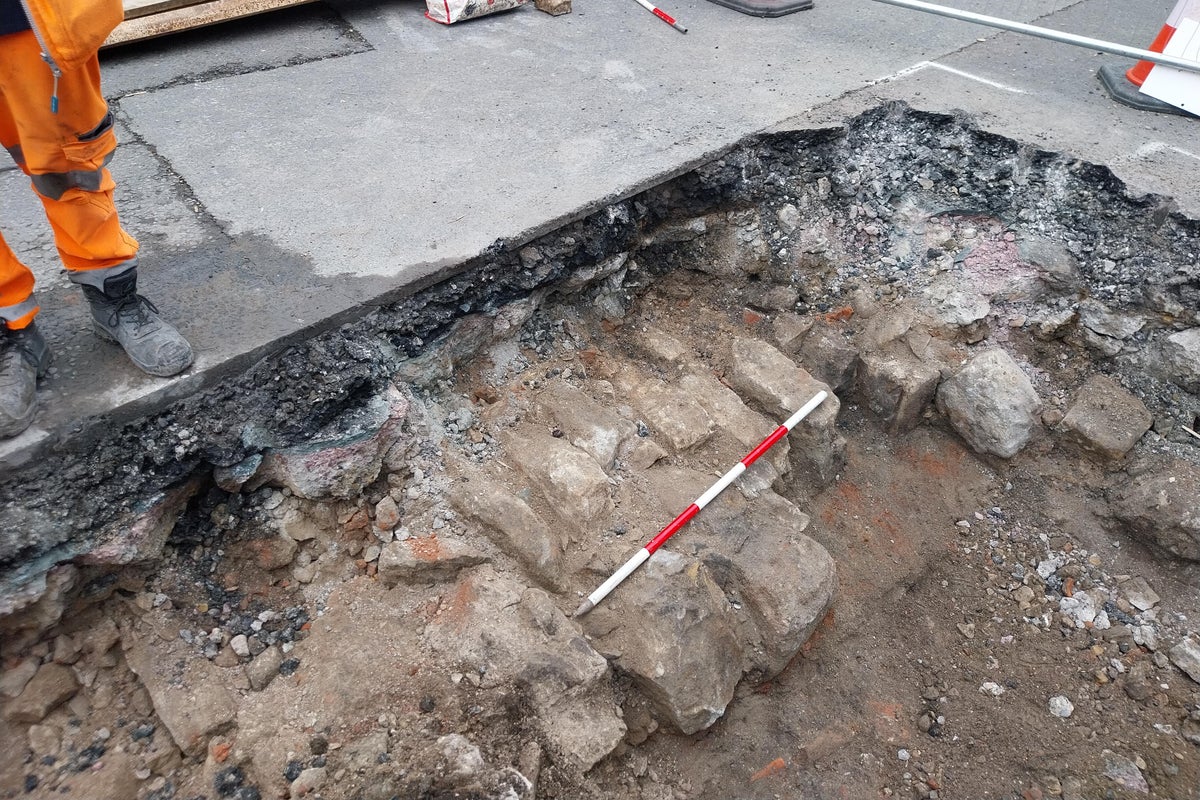Remnants of what is believed to be one of the largest medieval hospitals in the north of England have been found during repairs to a sinkhole in York.
Emergency work to repair the road outside York’s Theatre Royal ground to a halt earlier this month, after remains of a 12th to 13th century hospital were found beneath the surface.
Archaeology teams were called in to begin investigation works on St Leonard’s Place, uncovering what is believed to be St Leonard’s Hospital.
Founded soon after the Norman Conquest, St Leonard’s Hospital replaced the earlier St Peters hospital, which was founded by King Aethelstan and severely damaged in a fire around 1100 AD.
Stretching from what is now York’s Museum Gardens to the Theatre Royal, it cared for the unwell, elderly and condemned.
As well as caring for the sick, it fed the poor and provided meals for the prisoners in York Castle.
However, it was largely destroyed during the Reformation – leaving York without a hospital from the time of Henry VIII to 1740.
The remains were found inside a void that had opened up outside the 18th century Theatre Royal earlier this month.
Councillor Kate Ravilious, Executive Member for Transport said: “One of the consequences of living in a beautiful historic city like York is that when something like this happens, when we have a sinkhole, there often are some exciting archaeological remains to be looked at. Which is exactly what has happened here.”
After the Reformation the area was used as the Royal Mint. By the 1800s a warren of residencies, yards and stables stood there.
It was then demolished to make way from the new Georgian streetscape in 1836, as it became one of the most fashionable parts of the city at the time, with a new road built over it.
Liam Dennis, York City Council’s Ancient Monument’s Manager said: “As with any work in the middle of the city centre, as its an area of archaeological importance, archaeologists are on hand to record and preserve any remains we come across.
“Here we think we’ve found the remains of what was the North’s largest monastic hospital. If we were here in the 12th of 13th century we’d be on the outskirts of the site which used to spread from Museum Gardens, where the last of the remains can be seen today to the back of the Theatre Royal.
“What we think we’ve found are the remains of those demolished buildings, which the Georgians have used to be the base for their new boulevard, which would have linked the outskirts of the city to its very heart – past the fashionable Assembly Rooms, Red House and the Guildhall in the city centre.”

